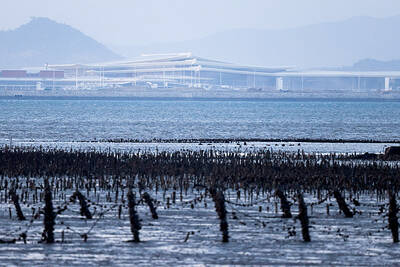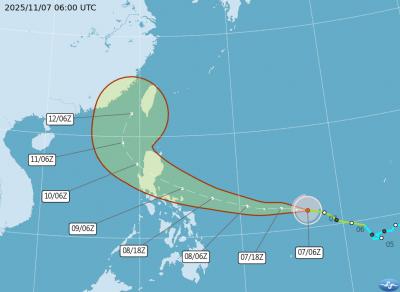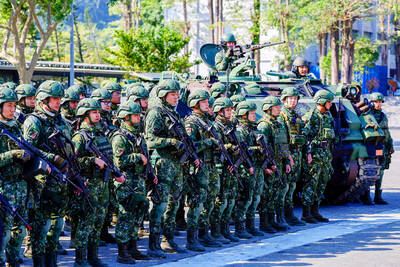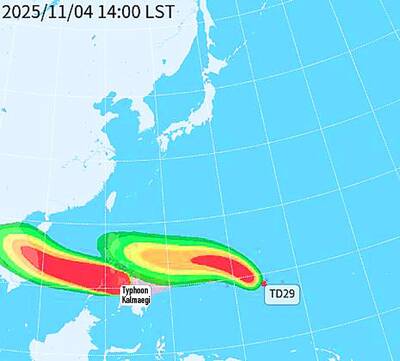The Ministry of Health and Welfare on Saturday announced that it would cancel its NT$600 million (US$20 million) “baby box” program proposal, which aimed to address the nation’s low fertility rate and the trend toward having fewer children.
The ministry in October proposed the program, which is modeled after a Finnish policy.
The so-called baby boxes would include childcare information and necessities for newborns, and each box would cost about NT$952 to produce.
The program was originally included as part of the Forward-looking Infrastructure Development Program.
The proposal faced a public backlash and on Oct. 17 a person claiming to be the mother of a two-year-old began a petition on the National Development Council’s online public policy participation platform requesting that the proposed budget be used instead to subsidize childcare and education for children aged two to five.
In a number of meetings and discussions with academics, experts and the public, all parties gave negative feedback and said that spending this money would not be effective, Minister of Health and Welfare Chen Shih-chung (陳時中) said, adding that the Executive Yuan asked that the money be spent where it is most needed.
The Executive Yuan and the Legislative Yuan also asked the ministry to reassess its proposal, Chen said, adding that fragmentary plans like the baby box program create excitement, but are not meaningful.
The Executive Yuan has a comprehensive plan for nurturing and recruiting talent, and the plan is also related to the trend of having fewer children, Chen said, adding that the resources would be integrated with those for the plan.
The baby box program was a mistaken decision that was forcibly added to the development program, Democratic Progressive Party Legislator Lin Ching-yi (林靜儀) said, adding that the ministry was correct to cancel it.
Taiwan Association of Obstetrics and Gynecology secretary-general Huang Min-chao (黃閔照) said that the decision was correct, as for regular families, the boxes would not be an incentive.
Women often worry that their jobs and positions would be affected after childbirth, Huang said, citing observations.
If the government could push for friendly workplace environments and allay women’s fear that their jobs will be affected if they have children, that would definitely raise the fertility rate, Huang added.
As the mission to tackle the falling fertility rate has already been transferred to the Executive Yuan and the National Development Council, the ministry would not develop new policies for the time being, Chen said.
According to statistics from the Ministry of the Interior, the number of newborns in the year as of the end of last month was 177,728 and if the current trend continues, the total number of newborns this year could be less than 200,000.

UNILATERAL MOVES: Officials have raised concerns that Beijing could try to exert economic control over Kinmen in a key development plan next year The Civil Aviation Administration (CAA) yesterday said that China has so far failed to provide any information about a new airport expected to open next year that is less than 10km from a Taiwanese airport, raising flight safety concerns. Xiamen Xiangan International Airport is only about 3km at its closest point from the islands in Kinmen County — the scene of on-off fighting during the Cold War — and construction work can be seen and heard clearly from the Taiwan side. In a written statement sent to Reuters, the CAA said that airports close to each other need detailed advanced

Tropical Storm Fung-Wong would likely strengthen into a typhoon later today as it continues moving westward across the Pacific before heading in Taiwan’s direction next week, the Central Weather Administration (CWA) said. As of 8am, Fung-Wong was about 2,190km east-southeast of Cape Oluanpi (鵝鑾鼻), Taiwan’s southernmost point, moving westward at 25kph and possibly accelerating to 31kph, CWA data showed. The tropical storm is currently over waters east of the Philippines and still far from Taiwan, CWA forecaster Tseng Chao-cheng (曾昭誠) said, adding that it could likely strengthen into a typhoon later in the day. It is forecast to reach the South China Sea

Almost a quarter of volunteer soldiers who signed up from 2021 to last year have sought early discharge, the Legislative Yuan’s Budget Center said in a report. The report said that 12,884 of 52,674 people who volunteered in the period had sought an early exit from the military, returning NT$895.96 million (US$28.86 million) to the government. In 2021, there was a 105.34 percent rise in the volunteer recruitment rate, but the number has steadily declined since then, missing recruitment targets, the Chinese-language United Daily News said, citing the report. In 2021, only 521 volunteers dropped out of the military, the report said, citing

WEATHER Typhoon forming: CWA A tropical depression is expected to form into a typhoon as early as today, the Central Weather Administration (CWA) said yesterday, adding that the storm’s path remains uncertain. Before the weekend, it would move toward the Philippines, the agency said. Some time around Monday next week, it might reach a turning point, either veering north toward waters east of Taiwan or continuing westward across the Philippines, the CWA said. Meanwhile, the eye of Typhoon Kalmaegi was 1,310km south-southeast of Oluanpi (鵝鑾鼻), Taiwan’s southernmost point, as of 2am yesterday, it said. The storm is forecast to move through central